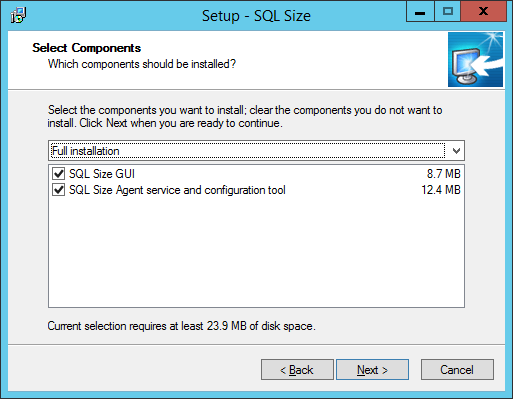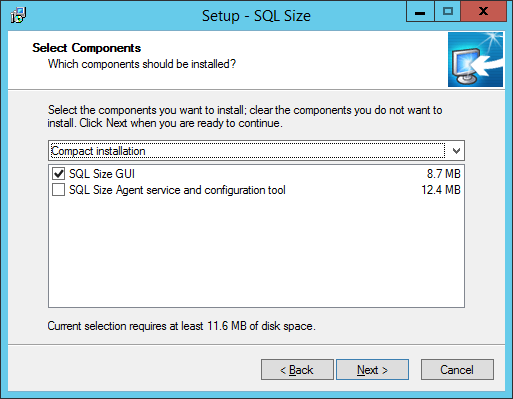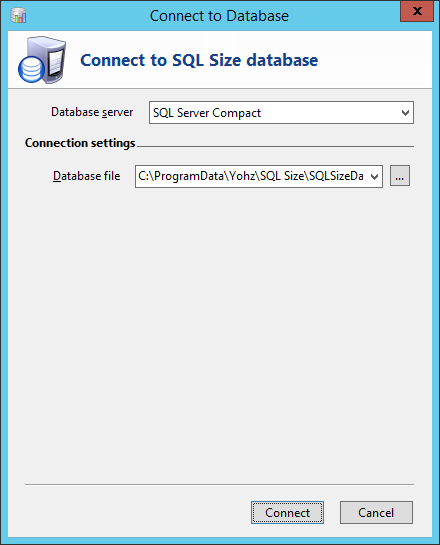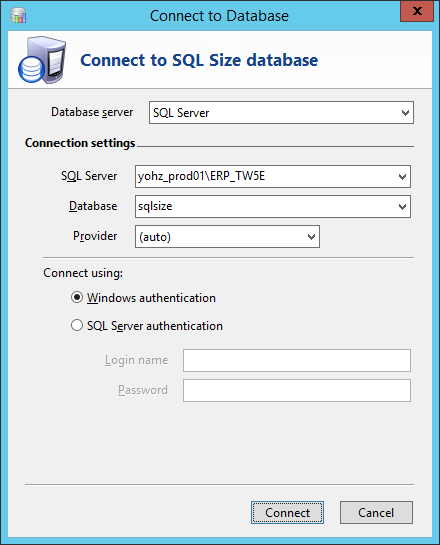Licensing
The SQL Size GUI does not require a license. You can install it on as many computers as you want.
Installation
You install the SQL Size GUI by running the SQL Size installer (which you can download from http://www.yohz.com), and then selecting the Full installation option,

|
or the Compact installation option.

|
Usage
When you start the SQL Size GUI, you will need to connect to a SQL Size database to retrieve the data from. Choose the SQL Server Compact option if you were using a SQL Server Compact Edition database to store the size data, and enter the name of the database file.

|
If you are using a SQL Server database to store the size data, select the SQL Server option, and enter the connection details to connect to that database.

|
Once connected to a SQL Size database, you can analyse the growth patterns of your databases:
| · | the
Overview page displays a summary
of the growth trend of each instance's databases |
| |
| · | for
each database, you can drill
down to analyse the growth trend of the database's components, and
also the largest tables |
| |

